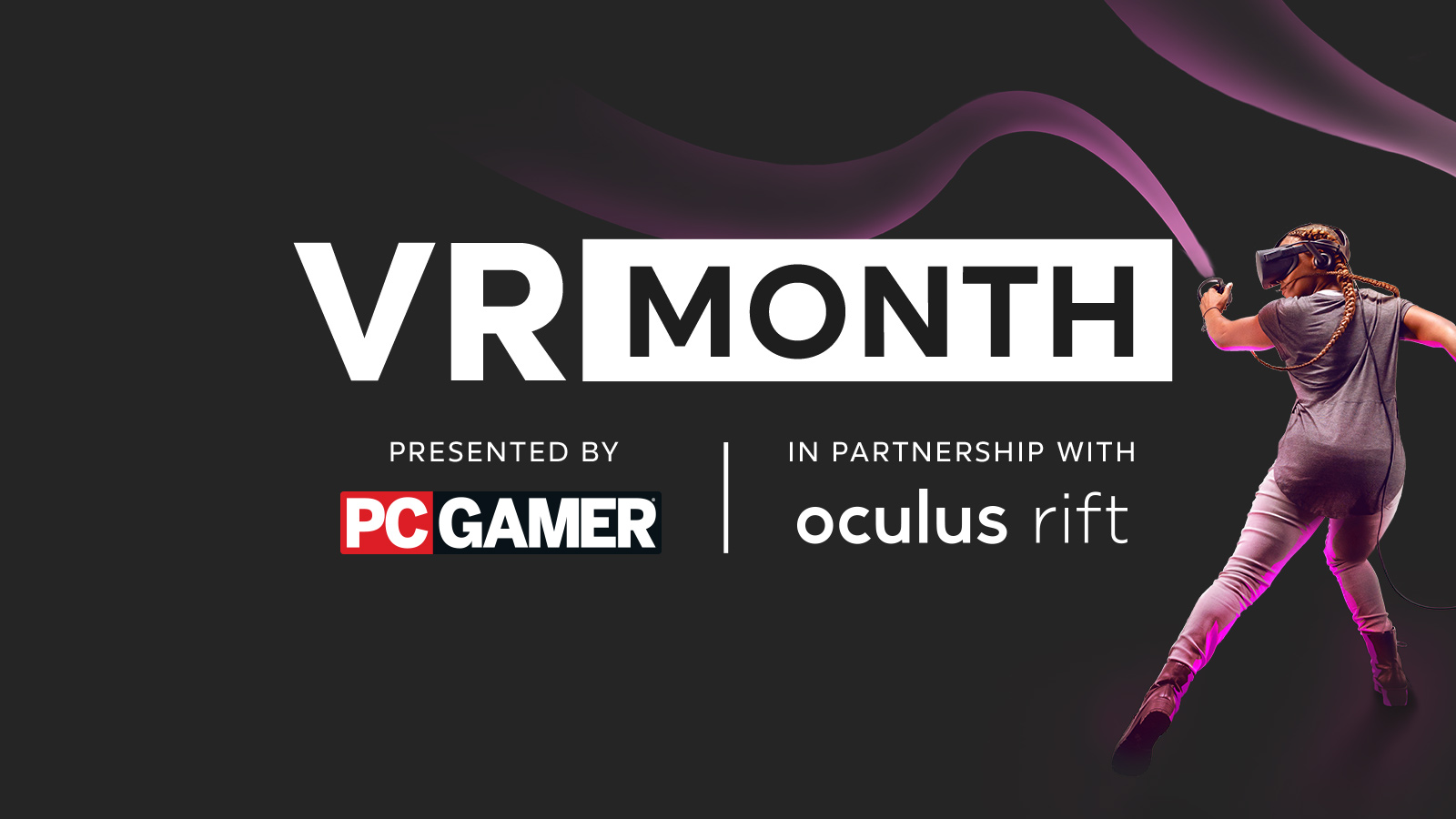Blade and Sorcery's glorious VR violence makes me feel guilty for every stab
Fantasy sandbox with axes, daggers and ragdolling enemies.
Blade and Sorcery lets you stab an enemy in the chest, yank your sword back out, fling it at another enemy, trigger slow motion, jump ten feet in the air, whip out dual daggers mid-flight and land on top of a third enemy’s head, plunging your blades into their skull—and, somehow, it makes me feel bad about killing.
Blade and Sorcery, released in Early Access on December 11 for some of the best VR headsets, is a VR combat sandbox in which you face waves of AI foes in three different arenas (the final game will have six). Those arenas are stacked with weapons for you to use, from daggers to greatswords, two-handed axes to bows and arrows, and you pick up extra weapons from downed enemies, either by physically crouching down and grabbing them or by pulling them into your hands with telekinesis.
You can also levitate and throw objects in the environment like barrels and boxes, as well as punch, kick, and zap enemies with a lightning spell or grapple with them, picking one up in each hand and bashing their heads together.
The variety of ways to kill encourages you to experiment, and because there’s no story or other distractions, I’ve found that I’m constantly coming up with new ideas for flashy combos. One of my favourite things to do is slip into slow motion and toss my weapon high into the air. I’ll then pull out a mace from my holster, smash an enemy in the face and drop it, looking skywards just in time to catch the weapon I threw earlier, and carry on.
It almost feels like performance art for an audience of one, and whenever I think of something new to try, I feel like I have to perfect it. I spent a good hour using just a spear, trying to master the combo of an underhand stab, flicking my weapon a foot into the air, catching it overhand, and throwing it at another enemy like a javelin. Every time I watch someone else play they do something I didn’t even think was possible, and I want to rush back in and try it out for myself.
The inherent chaos of putting lots of physics objects in one space leads to cool stuff happening by accident, too. For example, during my first couple of hours I was having trouble with shielded enemies. They kept blocking my attacks, no matter how tricky I tried to be. Then, in a particularly chaotic fight, my own shield got jammed between an enemy’s shield and their body. When I pulled my hand towards me, their shield followed, creating an opening for a stab.
And oh how I love stabbing in Blade and Sorcery, whether it’s with swords, sabres, daggers, spears, or even arrows. It’s a combination of the crunch of your weapon entering an enemy’s body, the wide-eyed surprise in their eyes, and the fact that weapons lodge in their flesh. You have to literally grab the handle and tug it out if you want it back.
The biggest gaming news, reviews and hardware deals
Keep up to date with the most important stories and the best deals, as picked by the PC Gamer team.
But as satisfying as it feels, it’s also where my guilt starts to creep in. I’ve never felt bad killing enemies in other games, whether by sword or by bullet. That’s partly because it feels like it’s my character, not me, who’s dishing out the pain. VR tears down that barrier by mapping your weapons directly to your hands and arms: it’s me landing the killing blow, controlling the exact angle of my blade as it pierces my enemy’s skin.
Other VR melee games like Gorn make that more palatable with cartoonish, exaggerated violence—but Blade and Sorcery’s human enemies, with their changing expressions and dying screams, make it feel more real.
Sometimes, you’ll knock an enemy down, and they’ll lay there for a few seconds, helpless, before getting back up to fight you. To begin with I was stabbing them while they waited, but I quickly felt ashamed, and if anybody else had been watching me play over my shoulder, I would’ve felt genuine embarrassment.
Please don't judge me:
It’s an odd sensation. And if I’m honest, most of the guilt comes from how much I’m enjoying it. As the best VR games become more realistic, they’ll edge closer to feeling like real-life violence, and Blade and Sorcery goes further in that direction than any other game I’ve played. But it stops short—barely—of making me so uncomfortable that I have to stop playing, or making me feel like my enjoyment says something about me as a person. For other players I suspect it will feel like too much.
I’m interested to see how, or if, my feelings change as Blade and Sorcery develops. The community has been calling for dismemberment and beheading, and the developer plans to add lots more spells, some of which will undoubtedly be gruesome. It might amplify my guilt or, if it’s done in an over-the-top way, make me feel more comfortable by moving battles further away from reality.
One thing Blade and Sorcery desperately needs going forward is a tutorial. Right now, the in-game training room is literally a table of weapons and a wooden dummy to smack, and I’ve mainly learned by watching others stream on Twitch. I wish it would’ve given me tips early on for getting used to the weight of the weapons, which are heavier than you might expect, and if you swing as fast as you can they won’t keep up with your hand, so you won’t deal much damage.
I like the idea, and the high skill ceiling means it feels like more of an achievement when you land a well-timed swipe with your sword. But it was frustrating at first, and it took me a good three to four hours to learn just how much I should slow down my strikes for maximum impact. A tutorial, or perhaps some real-time feedback on your weapon speed, would be helpful, especially because different weapons require different swing speeds to be effective.
It also feels unbalanced in a way that isn't intuitive: stabbing with your sword doesn’t appear to be affected in the same way, and is so much more powerful than swinging, to the point where there’s almost no point doing anything other than stabbing.
Swinging a weapon is even harder in slow motion and feels like it requires a very specific movement speed to connect, to the point where your fists are much more reliable than swords or axes. For a game with slow motion punches that lift an enemy off their feet, lightning spells, and telekinesis that lets you throw big concrete blocks at enemies, it's bizarre that the simple act of swinging a sword feels cumbersome.
But that’s the kind of thing that can be easily tweaked, and considering Blade and Sorcery is less than a week into Early Access (where it will remain for up to two years), I’m seriously impressed with how fluid it feels. I’ll happily dive in for a few hours every week to experiment with new stabbing techniques—and feel like a horrible person for loving every minute.
Samuel Horti is a long-time freelance writer for PC Gamer based in the UK, who loves RPGs and making long lists of games he'll never have time to play.



